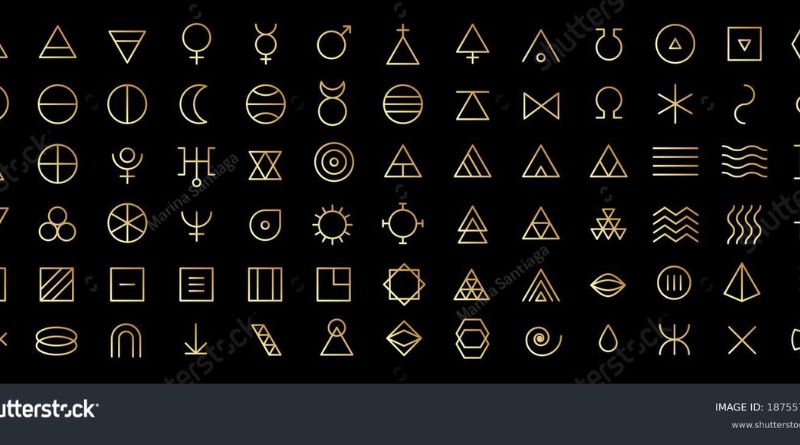The concept of a backwards three may sound a little peculiar at first, but it is more than just an abstract or random occurrence. This mirrored numeral has become an intriguing symbol, often popping up in different cultural, digital, and even mathematical contexts. From its visual appearance to its symbolic meanings, the backwards three offers a wide array of interpretations, which can vary depending on the perspective or environment in which it appears.
Table of Contents
In this article, we will explore the backwards three from a variety of viewpoints, including its significance in art, culture, mathematics, and more. Additionally, we will address some of the frequently asked questions surrounding the symbol and its uses.
Understanding the Backwards Three
A backwards three is simply the numeral 3, flipped horizontally. At first glance, it may seem like a minor variation of the standard number, but its visual difference gives it a unique place in the world of symbols. It’s not a common character in the standard alphanumeric set, but it often appears in specific fonts, graphic design, and artistic renderings. For example, it can be used in logos, stylized typography, and as a form of creative expression in various types of digital art.
The Backwards Three in Popular Culture
One of the most popular cultural uses of the backwards three is its presence in online trends and subcultures. For instance, the backwards three has been adopted as a visual motif in memes and digital art. In these cases, it is used to symbolize anything from rebelliousness to a sense of nonconformity. The flipped numeral might be used in logo designs, social media posts, or as part of a larger design concept where traditional rules of symmetry or order are intentionally ignored. Its use in these contexts might suggest an aesthetic choice, or it could be an expression of a certain attitude or mindset.
In music, the backwards three has occasionally been used as part of album art, band logos, and lyrics to invoke a sense of distortion or departure from the norm. For example, certain punk or alternative bands have adopted the backwards three as part of their visual branding, as it reinforces the themes of rebellion, disruption, and nonconformity.
The Symbolism of the Backwards Three
Like many symbols, the meaning behind a backwards three can differ based on context. For some, it represents an alternate perspective, challenging traditional ways of thinking or perceiving the world. For others, it might symbolize an attempt to “reverse” or go against the grain of societal expectations or norms. Let’s explore some of the possible interpretations and symbolic meanings attached to this symbol:
Reversal and Nonconformity
One common interpretation of the backwards three is the idea of reversal. This could represent a rejection of the conventional or mainstream, encouraging individuals to think outside of the box. It might be used to challenge societal norms, systems of power, or mainstream ideologies. In this context, the backwards three becomes a symbol of going against the flow, of creating something new by breaking from tradition.
Creativity and Innovation
Another possible interpretation of the backwards three is its association with creativity and innovation. When we look at symbols or ideas that are “backwards,” it can often evoke the notion of thinking differently. Many people who are pioneers in art, science, or business are known for thinking in ways that go against the grain. The backwards three could symbolize this type of creative approach—embracing the unconventional in order to create something new and innovative.
Reflection and Self-Examination
Sometimes, symbols like the backwards three can be linked to personal reflection or introspection. A mirrored number could suggest a process of looking inward or analyzing one’s own experiences from a different perspective. This interpretation may be more philosophical in nature, implying that the answer to a problem or situation may not be found in the usual places, but in reconsidering things from another angle.
The Backwards Three in Mathematics
In the world of mathematics, the backwards three has no official significance as a numeral or symbol. However, it can sometimes appear in mathematical and geometric contexts. For example, certain mathematical problems or concepts might use the backwards three to represent a stylized version of the number, typically for artistic or visual purposes. Additionally, its shape might be employed in diagrams to represent reflection, symmetry, or flipping in coordinate systems or functions.
Some might even point out that when written in a mirrored form, the backwards three can evoke an image of the letter “E,” which is the first letter of many mathematical terms like “equation” and “expression.” This subtle visual connection could be viewed as an interesting coincidence or could be used as a playful twist in certain contexts.
The Backwards Three in Art and Design
Art and design often rely on visual symbolism to evoke emotions or convey deeper meanings. The backwards three fits into this realm by offering an interesting twist on a simple, familiar number. It can be used in various forms of graphic design to create striking contrasts or emphasize a particular concept. In logos or digital design, the backwards three may be intentionally incorporated to catch the viewer’s eye, invoking curiosity or creating a sense of playfulness or disruption.
Furthermore, the backwards three can be part of larger visual patterns or sequences. When arranged in creative ways, this flipped number can serve as an aesthetic choice that adds uniqueness and flair to designs. It may appear as a pattern element in wallpaper designs, fashion collections, or architectural elements, serving both functional and ornamental purposes.
Frequently Asked Questions About the Backwards Three
1. What does the backwards three symbolize?
The backwards three can have various meanings depending on the context. It may symbolize rebellion, creativity, nonconformity, or the idea of thinking outside the box. It can also represent reflection or introspection, encouraging a new perspective on a given situation or problem.
2. Is the backwards three used in mathematics?
In mathematics, the backwards three does not have any official meaning or use. However, it may appear in certain visual contexts, such as geometry or diagrams, to represent symmetry or reflections.
3. Why is the backwards three popular in digital art and memes?
The backwards three is often used in digital art and memes because it evokes a sense of nonconformity and rebellion. It challenges traditional visual aesthetics and can create a sense of irony, humor, or uniqueness in the context of internet culture.
4. Can the backwards three be found in any logos or brands?
Yes, the backwards three has been used in some logos and branding, especially in industries related to music, fashion, and alternative culture. It is often used to convey a sense of uniqueness or to break from conventional design rules.
5. How can I use the backwards three in my own designs?
If you’re looking to incorporate the backwards three into your designs, you can use it to add a sense of movement or disruption. It can be effective in creating patterns, adding emphasis to a design, or invoking a feeling of creativity and boldness. Experiment with the mirrored shape in various contexts to see how it fits with your artistic goals.
Conclusion
The backwards three may seem like a small, simple symbol, but it carries a variety of meanings depending on how and where it is used. From representing rebellion and creativity to serving as a visual element in art and design, this flipped numeral can evoke different ideas and inspire new perspectives. Whether in digital media, mathematics, or graphic design, the backwards three serves as a reminder that even the smallest changes to a familiar symbol can result in something uniquely powerful.






